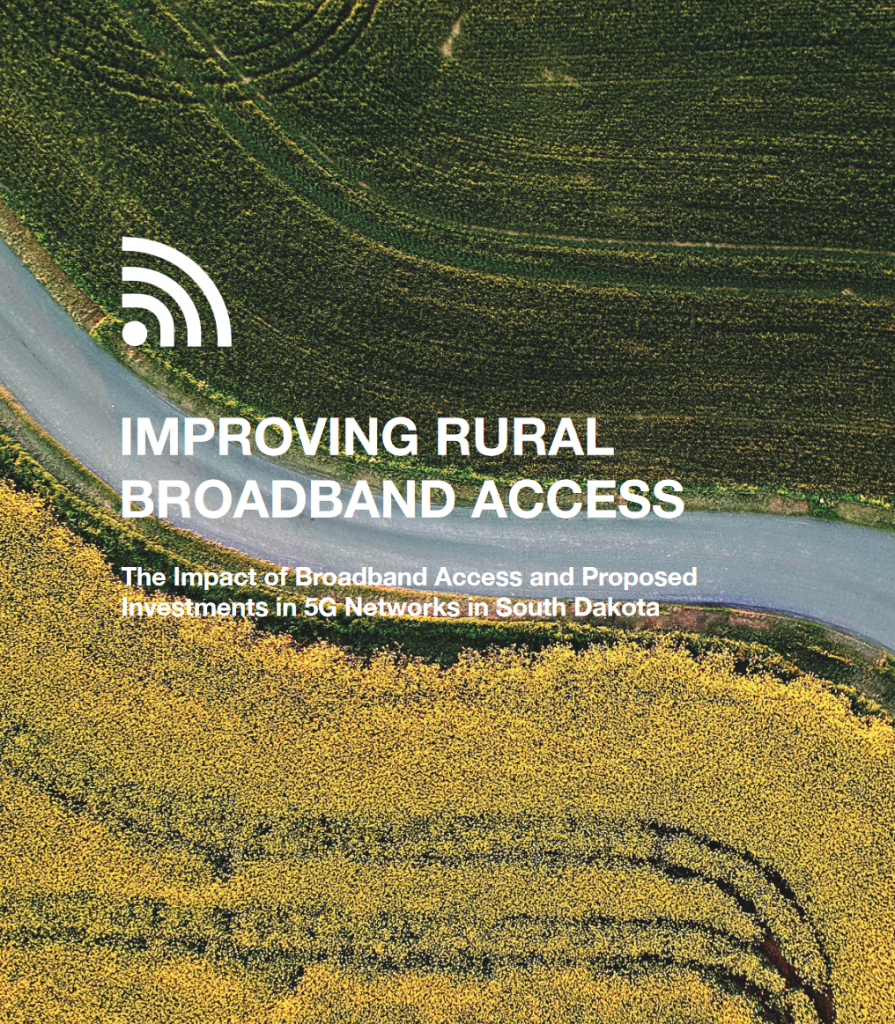This report assesses the state of rural broadband with specific focus on mobile broadband in rural America. Using South Dakota as a case study, we examine the impact of the coverage, capacity, and speed of mobile networks on the quality of life in rural America. We find evidence of a persistent urban-rural mobile divide and that even relatively urbanized areas of South Dakota may suffer from network congestion and slow speed during popular events. Given the South Dakotan economy has evolved towards services, improving the quality of mobile services is key to fostering future economic growth and economic development in rural areas of the state.
Key Points
1. South Dakota’s economy has evolved over the past three decades in that financial services are now the largest sector of the South Dakotan economy
2. The population of South Dakota continues to migrate from rural to relatively more urban areas of the state
3. South Dakota has significant variations in income, unemployment, and poverty at the county level
4. Perceptions of mobile services are linked with geographical location. Access to reliable service varies based on where one lives, works, and travels in South Dakota.
5. The lack of consistent coverage, capacity, and speed can pose threats to the quality of life.
6. Residents engage in satisficing behavior, accepting the quality of mobile services as it is rather than asking for more. Residents are resigned to the current state of mobile services.
7. Economic development and growth requires consistent, reliable internet service. Mobile services, especially with the advent of 5g, can provide broadband to underserved areas of South Dakota.
 757-683-3153
757-683-3153

